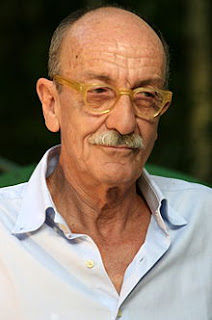Hieronymus Fabricius - anatomist and surgeon
Research pioneer known as “Father of Embryology”
The pioneering anatomist and physiologist known in academic history as Hieronymus Fabricius, whose Italian name was Girolamo Fabrizio, was born on this day in 1537 in Acquapendente, in Lazio. Fabrizio, who designed the first permanent theatre for public anatomical dissections, advanced the knowledge of the make-up of the human body in many areas, including the digestive system, the eyes and ears, and the veins. But his most significant discoveries were in embryology. He investigated the foetal development of many animals and humans and produced the first detailed description of the placenta. For this he became known as the "Father of Embryology". Fabrizio spent most of his life at the University of Padua, where he was a student under the guidance of Gabriele Falloppio, who discovered the tube connecting the ovaries with the uterus that became known as the Fallopian tube. He succeeded Falloppio as chair of surgery and anatomy. Read more…
_________________________________________________________________
Albano Carrisi - singer
Performer best known as Al Bano has sold 165 million records
The singer Albano Carrisi, better known as Al Bano, was born on this day in 1943 in Cellino San Marco, a town in Puglia about 30km (19 miles) from Lecce. He enjoyed considerable success as a solo artist in the late 1960s but became more famous still in Italy and across mainland Europe for his collaboration with the American singer Romina Power – daughter of the actor Tyrone Power. They met during the shooting of a film - one of several, mainly romantic comedies and a vehicle for his songs, in which he starred during the 1970s. They not only formed a professional partnership but were married for almost 30 years. They twice performed as Italy’s entry for the Eurovision Song Contest, finishing seventh on both occasions, and appeared several times at Italy’s prestigious Sanremo Music Festival, winning the top prize in 1984. They divorced in 1999 but reunited on a professional basis in 2013 and performed at the Arena di Verona in 2015 before a sell-out crowd of 11,000. His record sales are put at more than 165 million. Read more…
__________________________________________________________________
Pietro Bembo – poet and scholar
Lucrezia’s lover helped with the development of modern Italian
Pietro Bembo, a writer who was influential in the development of the Italian language, was born on this day in 1470 in Venice. He is probably most remembered for having an affair with Lucrezia Borgia while she was married to the Duke of Ferrara and he was living at the Este Court with them. His love letters to her were described by the English poet, Lord Byron, centuries later, as ‘the prettiest love letters in the world.’ As a boy, Bembo visited Florence with his father where he acquired a love for the Tuscan form of Italian which he was later to use as his literary medium. He later learnt Greek and went to study at the University of Padua. He spent two years at the Este Court in Ferrara where he wrote poetry that was reminiscent of Boccaccio and Petrarch. It was when he returned to the court at Ferrara a few years later he had an affair with Lucrezia Borgia, the daughter of Pope Alexander VI. Read more…
Home













